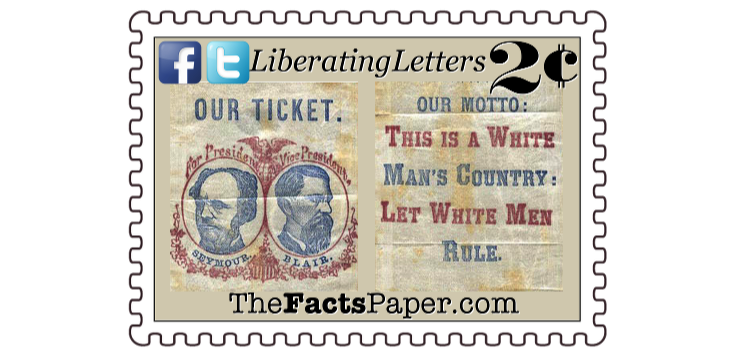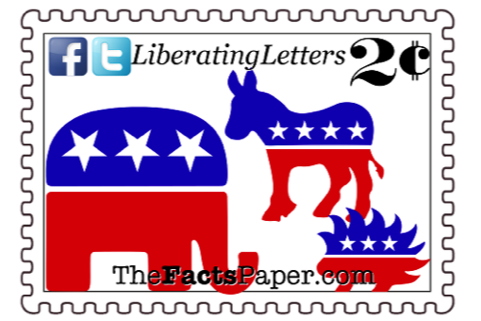
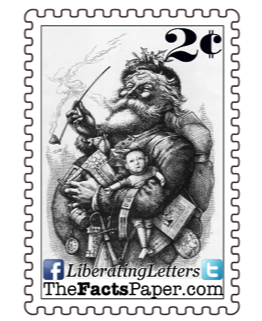
Despite cementing the political mascots for the two current major parties forever into history, Nast’s most famous picture was that of “Merry Old Santa Claus”. Published in the January 1, 1881, edition of Harper’s Weekly, this was the first time Santa was depicted as chubby and jolly. (see Yes, Liberty, There Is A Santa Claus) Until this point, he was primarily seen as a tall, thin man in long robes. The drawing, along with the "A Night Before Christmas" poem, redefined the centuries old view of St. Nick to Santa Claus.
Liberty, there is a saying: “The more things change the more they stay the same.” As far as I can remember, Democrats have always attacked Republicans with ludicrous allegations, using the same old playbook they developed in the mid-1800’s. In my lifetime, Republicans have been accused of wanting to take food away from children, let homeless die in the streets, let sick people die without medical care, and return to the time of slavery. Conservatives are constantly called racists, yet the most bigoted presidents have been on the left, including Progressives Woodrow Wilson and Lyndon B. Johnson. (see The Birth Of A Nation and Civil Rights…And Wrongs) The KKK, formed by white supremacist Confederate Democrat General Nathan Bedford Forrest, is called the “Terrorist Arm of the Democratic Party”, yet Democrats constantly try to pin the racist organization on the Republicans. (see How The South Was Won) In fact, Democrats have usually stood in the way of progress for blacks and women, with the Right leading and fighting those fights. (see The Right’s Fight For Rights and Civil Rights…And Wrongs)
Democrats demonize Republicans as terrorists as radical leftist Antifa and other student organizations torment colleges and conservatives while pundits on the left remain silent. (see Everything Free But Speech) Hillary Clinton, Nancy Pelosi and a plethora of other Democratic leaders routinely call their opponents Nazis (National Socialist German Worker's Party) while their party is openly embracing socialism. (see Sanger And Eugenics And Socialism, Oh, My and Labor Day's Communist Foundation) Likewise, they believe Republicans are white supremacists, except these groups also espouse Nazi ideals. (see There’s Nothing Right About The Alt-Right) They accuse Republican President Donald Trump of being a fascist after eight years of praising former Progressive Democratic President Barack Obama for vastly increasing government’s control while usurping his presidential authority over Congress and the people time and time again.
They try to frighten voters into believing the right is ready to round up people they don’t like and put them into camps. To be fair, this has happened in America before. Progressive Democratic President Franklin D. Roosevelt wanted desperately to inter Japanese-Americans, but could not legitimately do it until Japan attacked Pearl Harbor. (see A Date Which Will Live In Infamy) Still an immoral and unjustified act, Roosevelt had those of Japanese decent placed in concentration camps right here in America. (see Forgotten Atrocities Of World War II) Roosevelt also displayed his xenophobia and anti-Semitism, more traits Democrats hang on Republicans, when he denied a ship full of Jewish refugees fleeing from Germany in 1940, saying the fugitives were just ‘Jewish wailing’ and ‘sob stuff.’ (see Voyage Of The Damned)
Democrats continue to be the braying jackass in the forest, terrifying voters with outrageous lies. What is even worse is it often works because like the "Copperhead papers", the majority of the Main Stream Media is nothing more than Democrat propaganda. Liberty, in a tactic they learned from Saul Alinksy's Rules For Radicals. if you want to know what the Democratic Party is up to, just look at what their leaders accuse Republicans of doing. (see Everything Free But Speech) Then you will realize, their mascot characterizes the party perfectly.
That’s my 2 cents.
Love,
Mom
Nast's inspiration for depicting “The Republican Voter” as an elephant may have been the common phrase at the time, "seeing the elephant," referring to war. An 1864 illustration in a pro-Lincoln newspaper, Father Abraham, shows an elephant carrying a banner celebrating Union victories over slavery, which was probably Nast's point as well. The actual “Democrat Vote” is portrayed as a shy fox. Terrified animals scamper from the donkey in lion's clothing as the elephant falls through partially broken boards marked “Inflation”, “Repudiation”, and “Re-Construction (The Union as it was)” into a pit identified as “Southern Claims” and “Chaos”. Another board reads “Home Rule (This is a white man’s government),” referencing the 1868 Democratic slogan, "This is a White Man's County. (see Civil Rights...And Wrongs and How The South Was Won) Let White Men Rule". Along with the elephant, a goose representing Ohio, Grant’s home state, is also falling into the pit. Among the retreating animals, a posted sign reads "Honi soit qui mal y pense," meaning "May he be shamed who thinks badly of it," likely referring to Grant’s possible third term.
November 7, 2018
Dear Liberty,
Accusations, scare tactics, rhetoric, and political animosity, the perfect description of a country in chaos. The president is the most hated man in the country and is called a tyrant by the press. This describes the political atmosphere during the 1874 election that cemented the donkey and the elephant forever as our political mascots.
The story begins in 1824 when the country basically had one party, the Democratic-Republican Party. With four candidates running for president, no one received the required minimum electoral votes. Per the recently ratified 12th Amendment, the election was therefore sent to the House of Representatives. Even though Andrew Jackson had 99 votes to John Quincy Adams' 84, the House elected Adams. Believing Adams made a deal with Speaker of the House Henry Clay, Jackson and his supporters began to break from the Democratic-Republican Party. (see History Rhymes Again)
When Adams and Jackson met again four years later, Jackson's supporters, or Jacksonians, had not forgotten 1824. Yet neither had Adams' supporters. Both sides continued divisive and nasty accusations and allegations. Characterizing him as stubborn and stupid, Jackson opponents began calling him a 'jackass'. To his credit, Jackson embraced the insult, turning it around to a positive. Placing a donkey on his political posters, Jackson promoted the animal's characteristics of steadfastness, endurance, and its ability to carry heavy loads.
THE BIRTH
OF A MASCOT
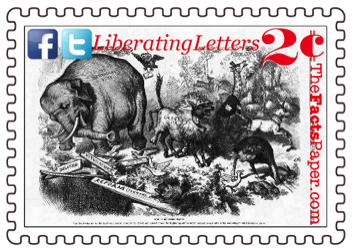
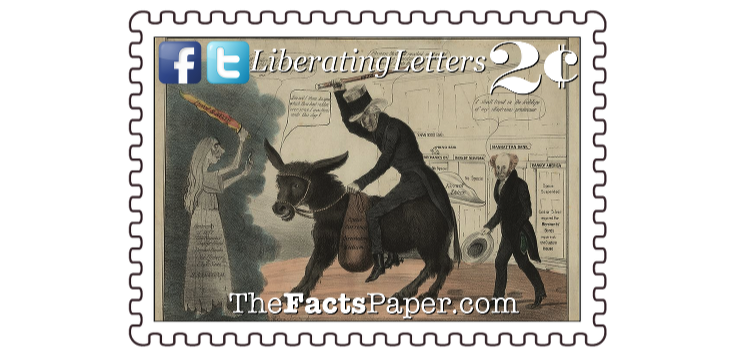
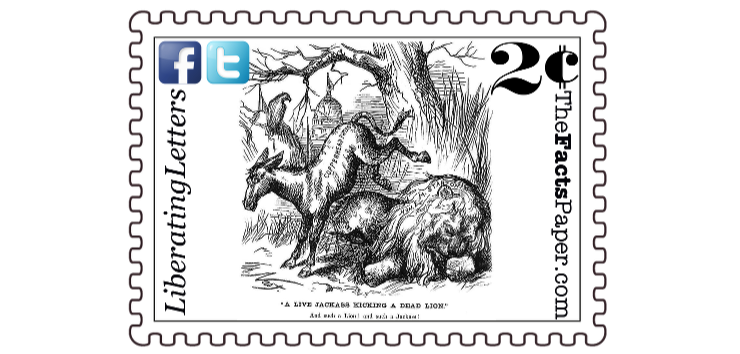
With his populist victory, Jackson became the "Father of the Democratic Party," forming the modern day party, yet some Democrats distanced themselves from their founder following his administration. An 1837 political cartoon, entitled “The modern Balaam and his ass,” placed Jackson on a donkey trying to lead him. Referring to the Biblical story in Numbers regarding prophet Balaam’s donkey refusing to go where Balaam led, the cartoonist implied the Democratic Party was not eager to follow the now former president.
The illustration of Jackson and the donkey faded from the public's mind until Thomas Nast hit American papers. Like so many at that time, the German-born American was illiterate, yet he was not ignorant as his wife read to him while he drew. Once he became successful, Nast hired scholars to educate him on such disciplines as the sciences, history, and literature. Americans responded to his creative illustrations, giving Nast the unique opportunity to persuade citizens with his cartoons. Words sometimes appeared in his drawings, which were placed there by his wife.
While Nast illustrated for several publications, his work became popular through Harper's Weekly where he was employed from 1862 until 1886. A Republican and stanch supporter of Republican President Abraham Lincoln, Nast used his platform to assist the Union’s cause. His drawings of battlefields in border and southern states brought awareness to the purpose of the war, prompting Lincoln to describe Nast as “our best recruiting sergeant.”
Nast resurrected the Democratic donkey in a cartoon published on January 19, 1870, to address the treatment of recently deceased Edward Stanton, Lincoln's Secretary of War. Editors were beating Stanton up in their newspapers. In a cartoon captioned: "A Live Jackass Kicking A Dead Lion. And such a Lion! And such a Jackass!" Nast labeled the donkey "Copperhead Papers," a reference to Northern Democrats who feigned support for the Union while adamantly opposing the war. Characterizing them as venomous snakes, Republicans labeled these anti-war Democrats as “Copperheads.” Editors, who were also Copperheads, used their papers as propaganda machines against the Republicans. Nast's cartoon expressed his disgust with their behavior in insulting Stanton, as well as Lincoln's Administration, and in no uncertain terms calling them jackasses.
Towards the end of Republican President Ulysses S. Grant’s second term, Democrat leaning newspapers panicked over the thought of a third term. Therefore, Democrats tried to frighten voters with scare tactics, claiming he would become a dictator. Nast fought back with his pen.
On November 7, 1874, Harper’s Weekly published Nast’s defining political picture definitely worth 1,000 words. He entitled his cartoon, “The Third Term Panic" with the byline: "An ass, having put on the Lion’s skin, roamed about in the forest, and amused himself by frightening all the foolish Animals he met with in his wanderings”. In this illustration, Nast places a lion's skin on the donkey, labeling it "Caesarism," horrifying all the other animals with accusations of Grant's authoritarianism. The donkey’s collar reads “N.Y. Heard,” again presenting it as a "Cooperhead paper" as its owner and editor, James Gordon Bennett Jr., adamantly criticized a possible third Grant term. However, a N.Y. Tribune giraffe, a N.Y. Times unicorn and a New York World owl, carrying a book entitled “Arithmetic,” flee from the braying donkey.
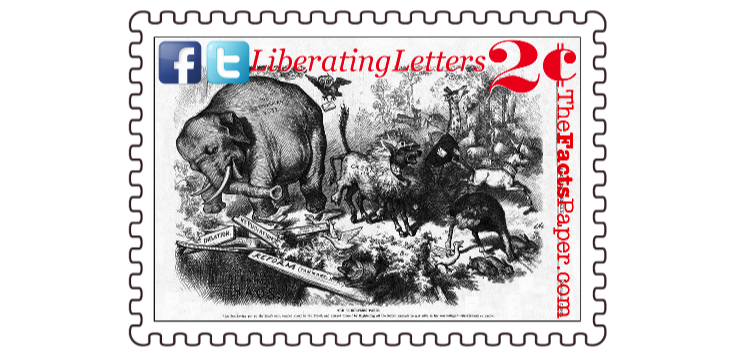
Calmly watching the elephant stumble, the fox rests on a plank entitled “Reform (Tammany K.K.)”, citing a very influential organization inside the Democratic Party known for its corruption. Bennett, New York Herald's owner, was a Tammany member.
Nast continued to use the elephant and the donkey as representatives for the Republicans and Democrats respectively for the remainder of his career. Eventually, the Republicans adopted their caricature as their official mascot. Despite the Democrats never doing the same with the donkey, the symbol is synonymous with the party. Other parties have also adopted animal mascots. When the Libertarian Party formed in 1971, they adopted the Statue of Liberty as their official symbol. (see Liberty On The Prairie) However, they chose a porcupine as their mascot for libertarianism as it is a defensive animal, living and letting live, only striking when attacked.
